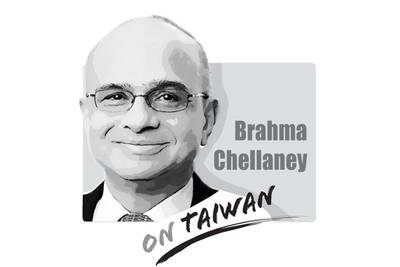While central banks have shown interest in developing their own digital currencies after Facebook last year scaled back its Libra cryptocurrency, the People’s Bank of China (PBOC) in Beijing has begun trials of its own in four cities, news outlets reported last week, citing the bank’s Digital Currency Research Institute.
The Chinese-government backed digital currency has not been officially released, but the pilot trials in Shenzhen, Suzhou, Xiongan New Area and Chengdu have drawn attention because of how this currency would function. It has also raised eyebrows regarding how a digitalized yuan would affect Chinese banks and payment service providers, as well as the domestic economy and the global financial market.
In the past few years, China has repeatedly made high-profile claims about its intention to issue the world’s first central bank digital currency, hoping it would promote the yuan’s internationalization and provide its sovereign digital currency with the same status as the US dollar — or even greater.
However, it is anyone’s guess just how and when Beijing intends to do this, because only a few details about the currency have been disclosed since the establishment of the institute in 2014.
As Chinese already commonly use electronic payments through smartphones, why should Beijing pour so much effort to promote a digital currency? Now that the PBOC has confirmed what it calls “digital currency, electronic payment” (DCEP), the pilot program offers a rare peek into how traditional currency in digital form is issued and governed by a central bank.
The institute said that the digital currency has the same value of paper notes and coins in circulation, but as suggested by its name, it is to develop into an electronic payment instrument under the central bank’s control. In light of the increasing prevalence of people using electronic payment services through privately run WeChat Pay and Alipay, the new currency could pose an issue for the Chinese Communist Party (CCP) in terms of capital outflow, money laundering, gambling and terror financing.
China’s goal to launch DCEP ahead of its international peers could reflect its desire to manage the relevant challenges on its own terms, some pundits have said. Developing a government-backed digital currency is not only a technological issue, but a complicated mix of user identities, legal concerns, control over monetary policy and national sovereignty. The use of digital money could not only replace cash in the future, it could significantly affect economic activity and the financial system.
However, unlike decentralized blockchain technology cryptocurrencies, such as bitcoin, that support anonymous transfers digital currencies developed by central banks remain supervised by those agencies and can be tracked electronically.
This has raised concerns: Would the CCP government monitor the behavior of people through the traceable characteristics of DCEP? Could such supervision eventually lead to controlling the behavior of people? Does the CCP intend to retain its long-term control of domestic politics and the economy through its DCEP?
There are no quick answers to those questions, but one certainty is that other central banks might move faster to launch their own currencies. It is a trend to use government-backed digital currencies as a substitute for or to complement bank notes to improve the efficiency of transactions or address the issue of safety in the financial system.
However, those currencies would also have economic, financial and even international political consequences, which deserve everyone’s close attention, including Taiwan’s central bank.
The government and local industries breathed a sigh of relief after Shin Kong Life Insurance Co last week said it would relinquish surface rights for two plots in Taipei’s Beitou District (北投) to Nvidia Corp. The US chip-design giant’s plan to expand its local presence will be crucial for Taiwan to safeguard its core role in the global artificial intelligence (AI) ecosystem and to advance the nation’s AI development. The land in dispute is owned by the Taipei City Government, which in 2021 sold the rights to develop and use the two plots of land, codenamed T17 and T18, to the
US President Donald Trump has announced his eagerness to meet North Korean leader Kim Jong-un while in South Korea for the APEC summit. That implies a possible revival of US-North Korea talks, frozen since 2019. While some would dismiss such a move as appeasement, renewed US engagement with North Korea could benefit Taiwan’s security interests. The long-standing stalemate between Washington and Pyongyang has allowed Beijing to entrench its dominance in the region, creating a myth that only China can “manage” Kim’s rogue nation. That dynamic has allowed Beijing to present itself as an indispensable power broker: extracting concessions from Washington, Seoul

Donald Trump’s return to the White House has offered Taiwan a paradoxical mix of reassurance and risk. Trump’s visceral hostility toward China could reinforce deterrence in the Taiwan Strait. Yet his disdain for alliances and penchant for transactional bargaining threaten to erode what Taiwan needs most: a reliable US commitment. Taiwan’s security depends less on US power than on US reliability, but Trump is undermining the latter. Deterrence without credibility is a hollow shield. Trump’s China policy in his second term has oscillated wildly between confrontation and conciliation. One day, he threatens Beijing with “massive” tariffs and calls China America’s “greatest geopolitical
Taiwan’s labor force participation rate among people aged 65 or older was only 9.9 percent for 2023 — far lower than in other advanced countries, Ministry of Labor data showed. The rate is 38.3 percent in South Korea, 25.7 percent in Japan and 31.5 percent in Singapore. On the surface, it might look good that more older adults in Taiwan can retire, but in reality, it reflects policies that make it difficult for elderly people to participate in the labor market. Most workplaces lack age-friendly environments, and few offer retraining programs or flexible job arrangements for employees older than 55. As